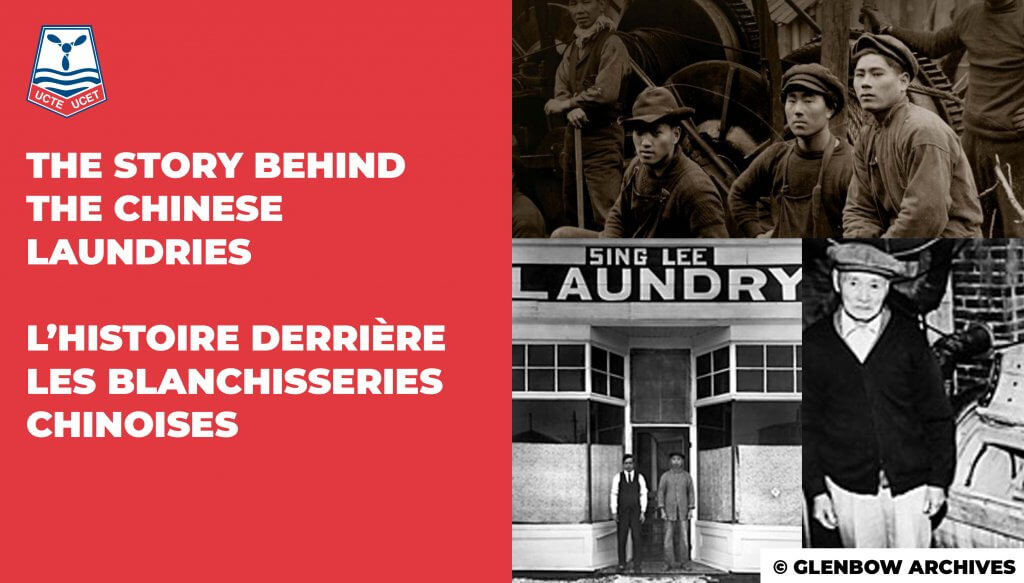Asian Heritage Month – The Story Behind the Chinese Laundries
It all started around the Canadian Pacific Railway project in 1887. Chinese workers were paid $1.00 a day, and from this small amount they had to pay for their food and equipment. White workers were paid $1.50 to $2.50 a day and did not have to buy groceries. In addition to the lesser pay, the Chinese workers were given the most dangerous tasks, such as handling the explosive, nitroglycerine, used to break up the solid rock. Because of the harsh conditions they faced, hundreds of Chinese Canadians working on the railway died in accidents, the cold of winter, and due to disease and malnutrition.
Once their work was done, many Chinese moved to different parts of Canada to take jobs where there was a demand. During these years, due to rampant racial discrimination and several other factors, these workers experienced harsh conditions — a slow economy, lack of capital and language problems.
It was due to these multiple challenges that many Chinese decided to earn a living in the laundry business. For a long time, despite will and effort, they lived below the poverty line. Between 1900 and 1950, many laundry operations were launched thanks to the Chinese. In 1921, there were 1,735 Chinese in Montreal and about 368 Chinese-owned laundries.
Racial discrimination and exclusion was prevalent at the time, and politicians pressured the Federal Government to severely limit the number of Chinese, Japanese and Indians admitted to the country. This, coupled with their difficult living conditions, meant that it could take many years for family reunification to become a reality. Canadian entry taxes and legal exclusion discouraged immigration of family members. The government increased the Chinese head tax over the years. In 1903, it reached $500, the equivalent of $14,800 in 2020 dollars. Finally, the Chinese Immigration Act of 1923 prohibited the entry of all Chinese until 1947. If we take the example of Ho King, the owner of the Central Laundry in Winnipeg, he left China in 1918 and was not joined by his wife until 1959 — a separation of 41 years!
Work in a laundry in those days was extremely physical, and could have harmful effects on the health and safety of workers. A Chinese worker earned in average $225 a year in 1900[1], working from 6 a.m. to midnight, seven days a week, under difficult conditions. Unions of the time were not what they are today. There were few activists fighting for the rights of Canadian workers. Given the ideology of the time and the lack of resources, the Chinese eventually formed their own union and demanded rights, humane working conditions, and a decent life.
Determined to change their harsh working conditions, a group of ninety came together in May 1906 to form Sai Wah Tong, the Chinese Laundry Workers’ Union. They demanded higher wages, a 13-hour workday, a two-hour lunch break, and a day off on Sunday. After successfully organizing a one-day strike in November of 1906, workers saw their monthly pay rise from $15 to $25.
Many Chinese workers in general were inspired by this movement to achieve higher wages and better working conditions. Their success was never comparable to that of the laundry workers, but it must be acknowledged that some improvements were made for these Canadians at the time. Between 1916 and 1920, Chinese-Canadian workers began to organize to form their own unions, including the Chinese Railroad Workers, the Chinese Canadian Labour Union, the Chinese Cooks’ Union and the Chinese Restaurant Workers Union. The Chinese Labour Association was formed in 1916 and conducted several strikes. By 1918, the association had over 500 members.
In the late 1940s, mechanization and the aging of the first Chinese immigrants led to the gradual disappearance of Chinese laundries. These Chinese activists have made a great contribution to the Canadian population and have made history. They fought for their lives and left their mark on the history of early Chinese immigrants discriminated against in all sorts of ways for over half a century. It is important to remember these moments in history and to understand why it is still today so fundamental a fight against discrimination.
https://syndicatafpc.ca/moments-gens-qui-ont-marque-syndicalisme-canado?_ga=2.188307048.1771725424.1653418190-1476688755.1636553290
https://www.museedelhistoire.ca/cmc/exhibitions/hist/phase2/mod5f.html
https://www2.gov.bc.ca/gov/content/governments/multiculturalism-anti-racism/chinese-legacy-bc/history/building-the-railway
https://ourtimes.ca/article/early-chinese-worker-militancy-in-bc
[1] https://ourtimes.ca/article/early-chinese-worker-militancy-in-bc
